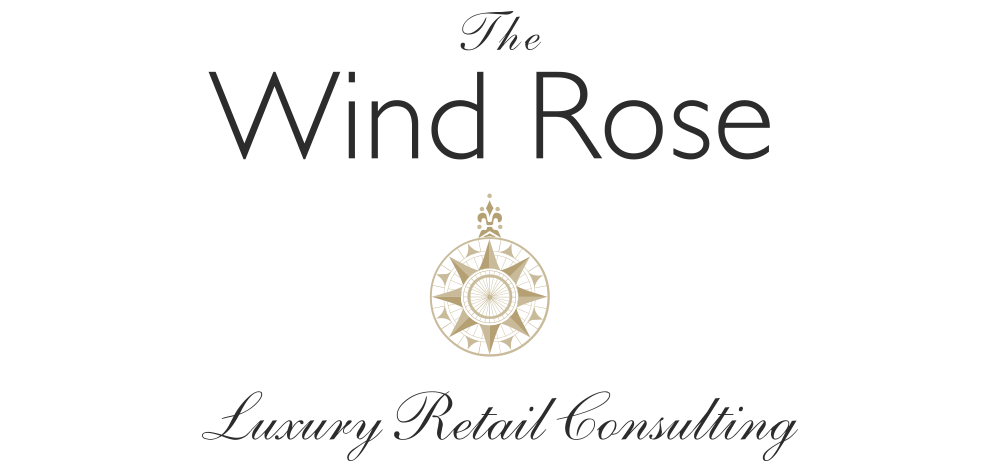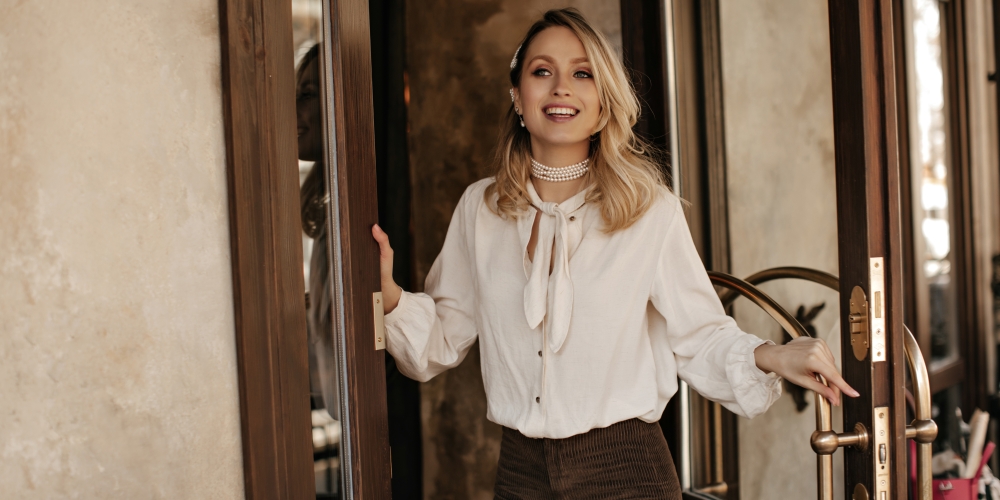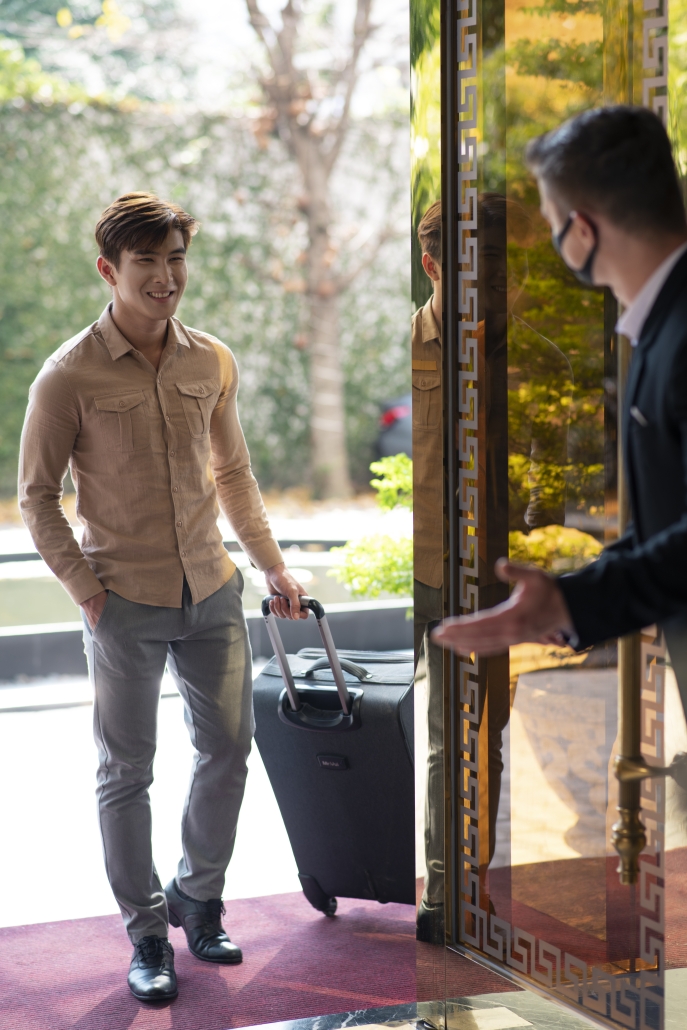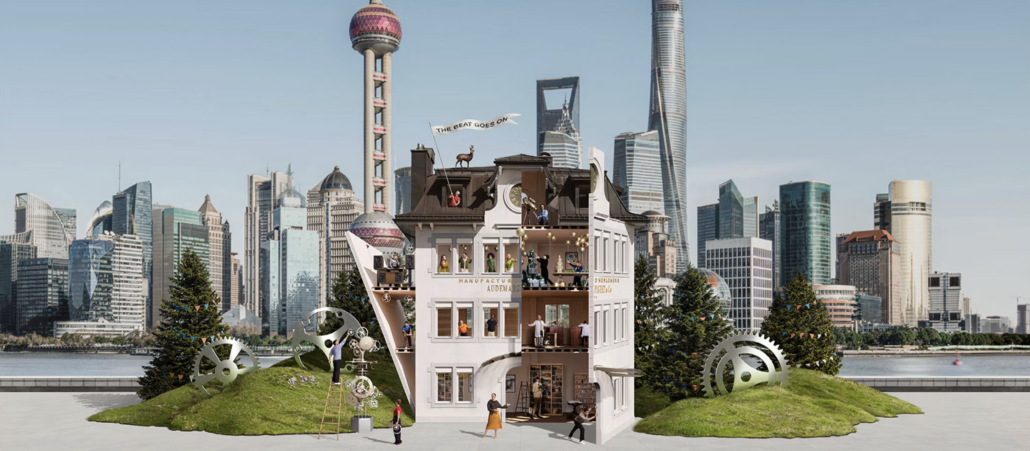TELL ME A STORY #8
“Welcome”
a tribute to hospitality in Luxury Retail
The doorbell rings, and I rush to grab the package from the delivery person. My Sézane order has arrived. I unpack it feverishly. The contents are everything I was hoping for: scented tissue paper, a personalized card telling me that Marianne prepared my parcel, and even a tote bag as a gift. Even though I ordered online, I feel seen. I sigh with relief. Sézane has gotten me out of a tight spot. I would never have had the time this week to go shopping before the wedding I’m attending on Saturday.
In Luxury: New challenges, new challengers [1], Jean-Noël Kapferer explains that excellent service must have three dimensions: reducing effort, creating satisfaction, and increasing emotional impact. Undeniably, online shopping reduces my effort, and true to the millennial stereotype who is always overwhelmed, I’ve taken full advantage of it. In just a few clicks, I’ve saved myself a trip downtown and everything it involves—traffic jams, precious time and fatigue. The parcel in my hands, delivered at record speed and that can be returned free of charge, is a source of satisfaction. But what about the emotion, once the thrill of unwrapping and trying on my purchase is gone? Who will congratulate me, reassure me about the fit of the dress, or walk me to the door? What memory will I keep of my experience, other than its practicality? Sézane is undeniably one of the greatest online successes of recent years, and yet, the brand has opened a handful of showrooms. Because, whether the young’uns like it or not, the physical store has not yet had its last word.
Luxury must now be an experience,
and it’s the hotel industry that’s showing us the way.
According to a study cited by Lab Luxury & Retail, 62% of 18–26-year-olds are willing to pay more for a personalized experience. Also, according to Forbes, citing a Fortune Business Insight study, the global luxury hospitality market will grow by 11.5% annually between 2024 and 2032, while the luxury sector overall shrank by 1% in 2024. The future of Retail lies here, in hospitality, not service. What is the difference, you may ask? The word “service” comes from the Latin servitium, meaning “slavery.”
Amazon is at my beck and call, responding 24/7 and delivering even on Sundays. There’s no humanity there, nor do you expect it. Now step into your favorite store. Don’t push the door, it will be opened for you, because your presence was expected. That is hospitality, from the Latin hospes, meaning “guest.” In Antiquity, hospitality was a reciprocal bond, far removed from the servile relationship of master to slave. In-store, the sales assistant invites you to a pleasant moment, on equal footing.
“The boutique as a convivial place,
one where stories are made rather than told.”
Gone are the days when luxury goods were sold in droves over the counter, so very 20th century… Digital technology has brought us back to basics: the boutique as a convivial place, one where stories are made rather than told, as Erwan Rambourg points out in Future Luxe. One can’t help thinking of the genius with which Steve Jobs applied his “Think Different” motto in Apple concept stores. The Genius Bar was a kind of hospitality revolution, inspired by Ritz concierge desks as a privileged place to seek technical support or discover products. The Apple Store aims to be an experience, and therefore an emotional one; otherwise, you might as well buy online. The 21st century is indeed that of physical, in-person Retail—if we make the effort! For this, boutiques must become a “third place,” explains Rambourg, a hybrid between office and home, a bit like gentlemen clubs of old. Audemars-Piguet illustrates the concept beautifully with its AP Houses, “a place to immerse oneself in a book and enjoy culture and gastronomy. A place where one could discover watches, but not always and not only,” according to their Milanese architect Piero Lissoni. And why not have lunch at the Maison Ralph Lauren restaurant in Paris, or a hot chocolate at Bulgari in Tokyo? A genuine living space, the boutique also becomes a place of learning and entertainment. Louis Vuitton offers cultural spaces in its largest Maisons to showcase the work of contemporary artists. As you can see, the luxury boutique, which we prefer to call a “house”, is far from being just a counter. Bob Hooey famously said: “If you don’t take care of your customers, your competitors will.” A word to the wise.
Audemars-Piguet, The House of Wonders in Shanghai, May 2025
Have you read The Fairies by Charles Perrault [2] ? It tells the story of two sisters, one good and beautiful but enslaved by her family, the other snobbish and hateful but adored by her mother. One day, the first meets an old beggar woman at the fountain who asks her for water, and she generously obliges. The old woman was in fact a fairy, who, in thanks, causes pearls and diamonds to fall from the girl’s lips with every word she speaks. The nasty sister rushes to the fountain, where she meets the fairy, this time disguised as a princess, whom she rudely refuses to serve. Bad idea: from then on, she spits out toads and vipers. Wasn’t that great Charles a visionary? Pamper your clients, welcome them warmly, and you will be rewarded far beyond their loyalty. It is both gratifying and empowering to give the best of oneself, and one always receives at least as much as one has given.
And you, what are your finest examples of hospitality?
Aurélie Leborgne,
October 2025
–
[1] Available in French as Luxe : nouveaux challenges, nouveaux challengers, Eyrolles, 2026.
[2] Les Fées, original title by Charles Perrault.
credits images : Freepik.com / Audemars-Piguet








Leave a Reply
Want to join the discussion?Feel free to contribute!